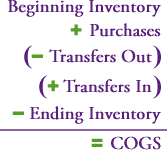Campbell
Company
Income
statement
For the year ended December 31, 2001
====================================================================
(1) No:
Revenue $1,360,000
Cost of
goods sold:
Beginning finished goods, January1,
2001 $100,000
Cost of goods manufactured (see
scheduled bellow) $960,000
Cost of goods available for
sale $1,060,000
Ending finished goods, December
31, 2001 $150,000 $910,000
Gross
margin or (gross profit) $450,000
Marketing, distribution and customer
service-cost:
Marketing promotions $60,000
Marketing salaries
$100,000
Distribution cost $70,000
Customer service cost
$100,000 $330,000
Operating income $120,000
Campbell
Company
Scheduled
for cost of goods manufactured
For the year ended December 31, 2001
======================================================================
Direct materials:
Beginning inventory January 1,
2001 $40,000
Purchases of direct materials $460,000
Cost of direct materials available
for use $500,000
Ending inventory December 31,
2001 $50,000
Direct materials
used $450,000(v)
Direct manufacturing
labor $300,000(v)
Indirect
manufacturing cost:
Sand paper $2,000(v)
Materials-handling costs $70,000(v)
Lubricants and coolants $5,000(v)
Miscellaneous indirect
manufacturing labor $40,000(v)
Plant-leasing cost $54,000(F)
Depreciation-plant equipments $36,000(F)
Property taxes on plant
equipment $4,000(F)
Fire insurance on plant
equipment $3,000(F) $214,000
Manufacturing
cost incurred during 2001 $964,000
Add beginning
work in process January 1, 2001 $10,000
$974,000
Total manufacturing
for deduct ending work in process Dec. 31, 2001 $14,000
Cost of goods manufactured
(to income statement) $960,000
(2)No:
Direct materials
unite cost = Direct materials used /
Unites produced
= $450,000 / $900,000
=
$0.50
Plant-leasing
Unite cost = plant-leasing cost /
Unites produced
=
$54,000 / $900,000
=
$0.06
(3)No:
The direct
materials cost are variable, so they would increase in total from $450,000 to
$500,000 ($1,000,000 Unites * $0.50). However, their unit cost would be
unaffected : $500,000 / $$1,000,000 units =$0.50.
In contrast,
the plant-leasing costs of $54,000 are fixed, so they would not increase in
total. However, the plant-leasing costs per unit would decline from $0.060 to
$0.054: $54,000 / $1,000,000 = $ $0.054.
(4)No:
The explanation
will begin with the answer of requirements 3. As a consultant, you should stress
that utilizing (averaging) of costs that have different behavior pattern can be
misleading. A common error is to assume that a total unit cost which is often a
sum of variable unit cost and fixed cost, is an indicator that cost change in a
wholly way as a production level change. The next chapter demonstrates the necessary
for distinguishing between cost behaviors per units. You must be wary especially
about average fixed cost per unit. Too often unit fixed cost is erroneously as
being regard as being indistinguishable from unit variable costs.


